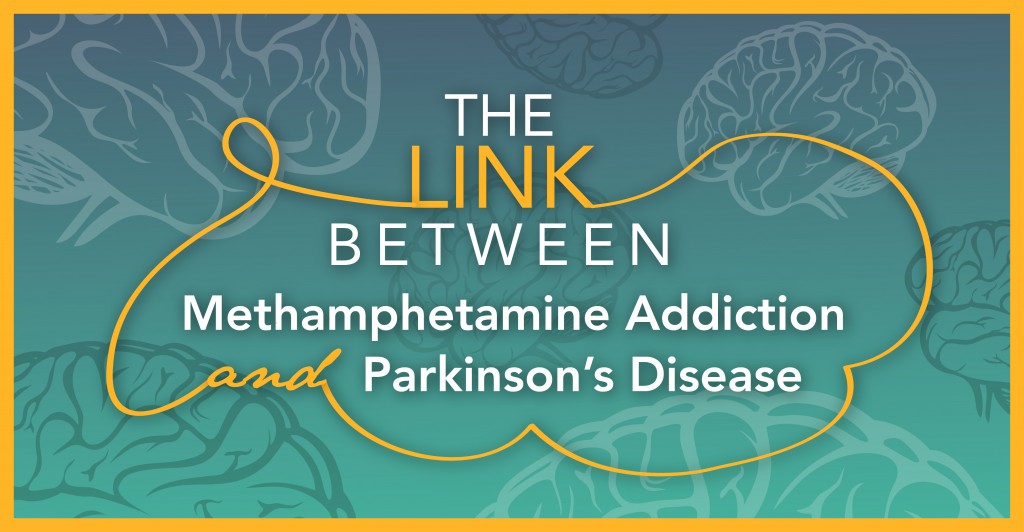
Recent studies have linked use of methamphetamine and amphetamine drugs, some of the most commonly abused substances, to an increased risk of Parkinson’s Disease. The adverse effects of methamphetamine on the neurotransmitter dopamine relate directly to a dopamine deficiency strongly associated with Parkinson’s. When other factors were also examined, including factors known to contribute to higher rates of Parkinson’s, prior use or abuse of methamphetamines most strongly correlated with a significant increase in the risk of developing the disease.
Parkinson’s is a degenerative central nervous system disease that affects approximately one million people in the United States. It is characterized by muscle tremors and spasms, muscle rigidity, impaired coordination, and decreased mobility.
How Do Methamphetamines Cause Parkinson’s Disease?
Parkinson’s disease is caused from death of a region of the nervous system known as the substantia nigra. This part of the brain both produces and releases the neurotransmitter dopamine. Since dopamine is so closely tied with the primary functions of the nervous system as they relate to coordination and movement, a permanent dopamine deficiency can lead to the same progressive and chronic symptoms that characterize Parkinson’s disease.
Researchers have long known from non-human animal studies that methamphetamine induces cell death within the substantia nigra, though only recently have studies been able to verify the correlation to any large degree. One of the animal studies conducted in the mid-1990s indicated a total reduction in dopamine within the substantia nigra in laboratory mice of 40-45 percent within one week of exposure to methamphetamine. A similar study on mice demonstrated that just three dose-proportioned methamphetamine injections set at three hour intervals produced a fairly immediate reduction in dopaminergic cells of between 20 and 25 percent.
Observable significant increases in microglial cells, designed to protect the nervous system, are seen within the substantia nigra within hours after methamphetamine exposure, indicating some level of neurotoxicity.
In human studies, methamphetamine abuse results in similar neurotoxicological effects, resulting in a 50 percent decrease in dopamine levels. These studies also indicate a correlating increase in microglial cells, or the protective cells of the nervous system, indicating a similar response to dopaminergic cell damage within the substantia nigra.
Adverse Health Effects Of Methamphetamines
In addition to dopamine cell death, abuse of methamphetamine, a nervous system stimulant, can also lead to memory loss and cardiovascular damage, as well psychotic behaviors, social isolation, aggravation or aggression, and mood disorders including anxiety, depression, and paranoia.
Someone who is abusing methamphetamine is also likely to experience an increase in both respirations and heart rate, irregular heart beats, significant reduction in appetite, and severe insomnia. Methamphetamine abuse can also lead to a feeling “skin crawling,” in which someone feels compelled to scratch or pick at their skin. Hair loss and tooth decay are also common with long-term use of methamphetamine, as is malnutrition from changes in diet.
Side Effects of Methamphetamine Abuse
- Memory loss
- Increased heart rate and breathing
- Loss of appetite
- Insomnia
- Formication (skin crawling)
- Tooth decay
- Hair loss
- Malnutrition
- Mental and mood disorders
- Psychosis
- Parkinson’s disease
Methamphetamine abuse begins with a feeling of euphoria and crash lands in a battleground of severe withdrawal symptoms including fatigue, achiness, gastrointestinal upset, weight gain, anxiety, paranoia, depression, and even withdrawal-induced psychosis. Accompanying the withdrawal symptoms of methamphetamines, cravings for the drug are also severe.
Early Signs Of Parkinson’s Disease
Those with a history of methamphetamine abuse or individuals currently abusing the substance, may wish to become familiar with the early signs of Parkinson’s Disease. Though there is currently no known cure, early detection of the disease can improve long-term outcomes.
Early signs of Parkinson’s Disease include small tremors or shakiness, which can interrupt simple daily tasks like writing or buttoning a shirt. Someone might also notice changes in their balance as they walk, decreasing their stride or shuffling their feet. Other signs include unexplained muscle tightness or rigidity and spasms. Changes in sleep may also occur as involuntary movements result in disruption of normal sleep cycles. Gastrointestinal changes are also common, most notably constipation.
Know the Warning Signs of Parkinson’s
- Tremors or shakiness
- Changes in balance
- Muscle tightness or rigidity
- Muscle spasms
- Interrupted sleep caused by muscle spasms
- Constipation
If you have any of these symptoms, please consult with a medical professional. If you are currently suffering with an addiction to methamphetamines, effective treatment options include residential treatment, intensive and cognitive behavioral therapies, as well as long-term individual counselling and group support.
Get Help For Your Methamphetamine Addiction Today
A methamphetamine addiction is a serious matter that requires intensive treatment. DrugRehab.org can connect you to the treatment professionals and evidence-based drug rehabilitaiton programs available to meet your individual recovery needs. You deserve better than the addiction. Begin your path to recovery by contacting us at DrugRehab.org and discover a new and rewarding life free from addiction.

